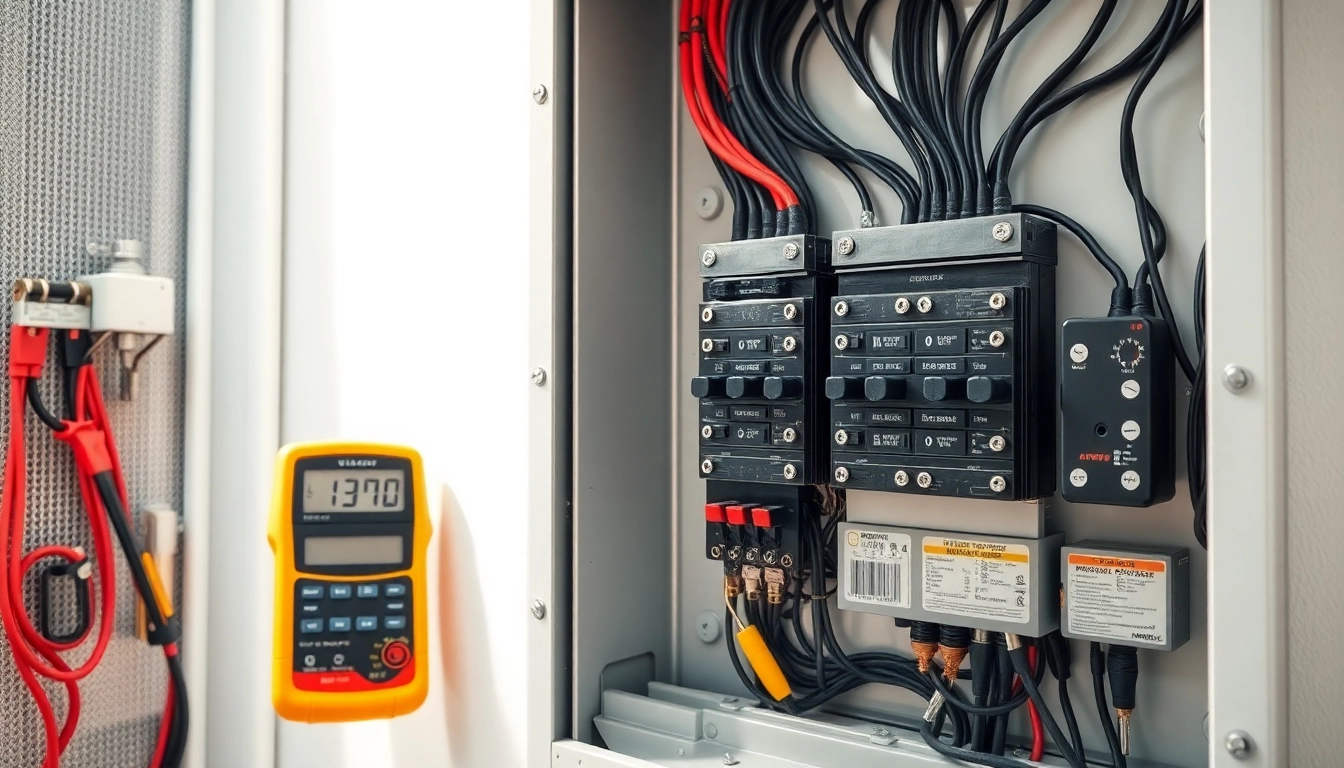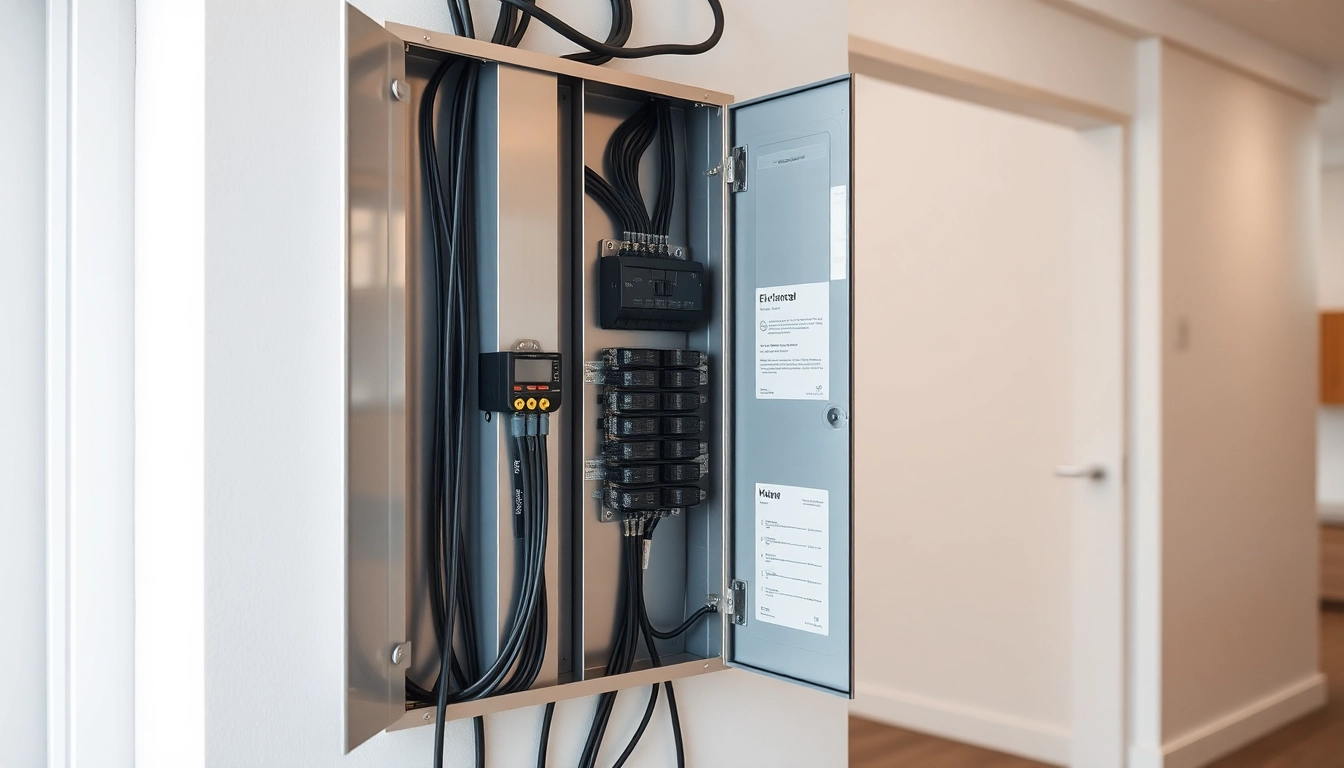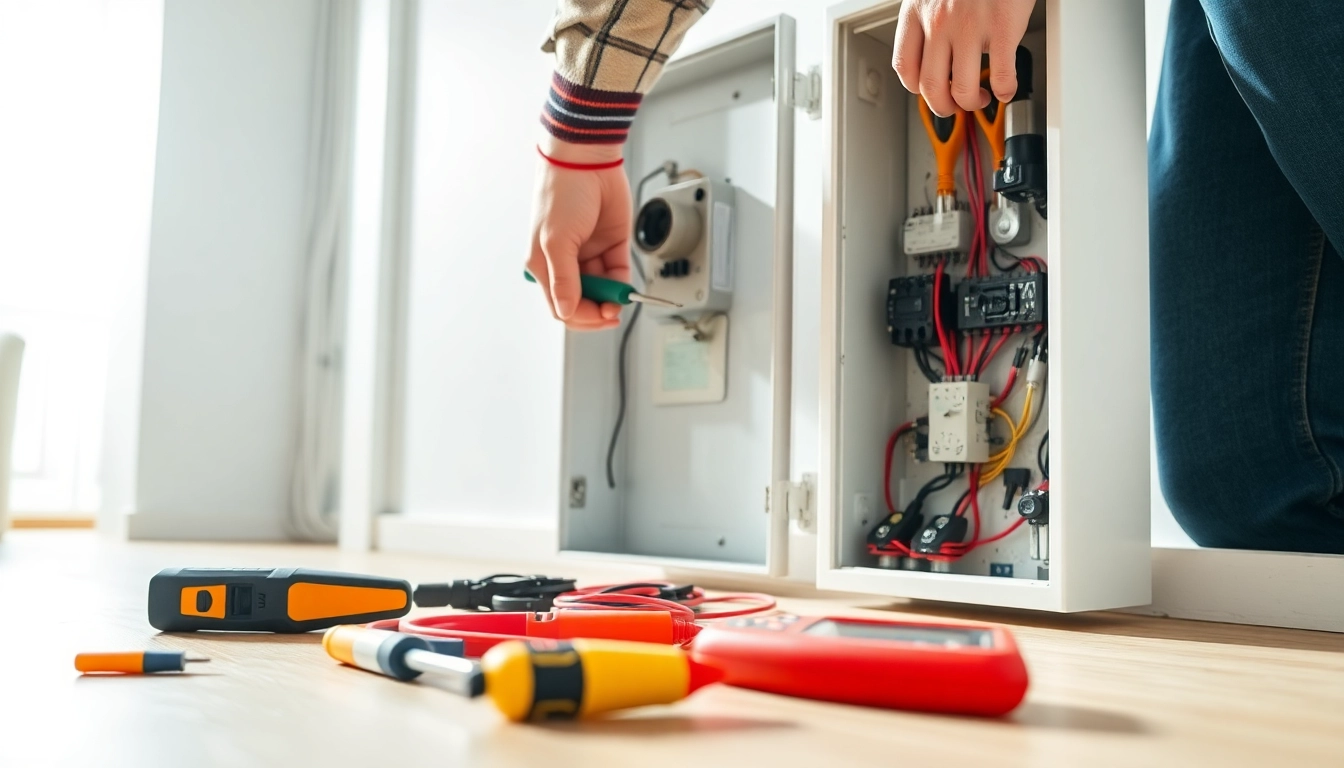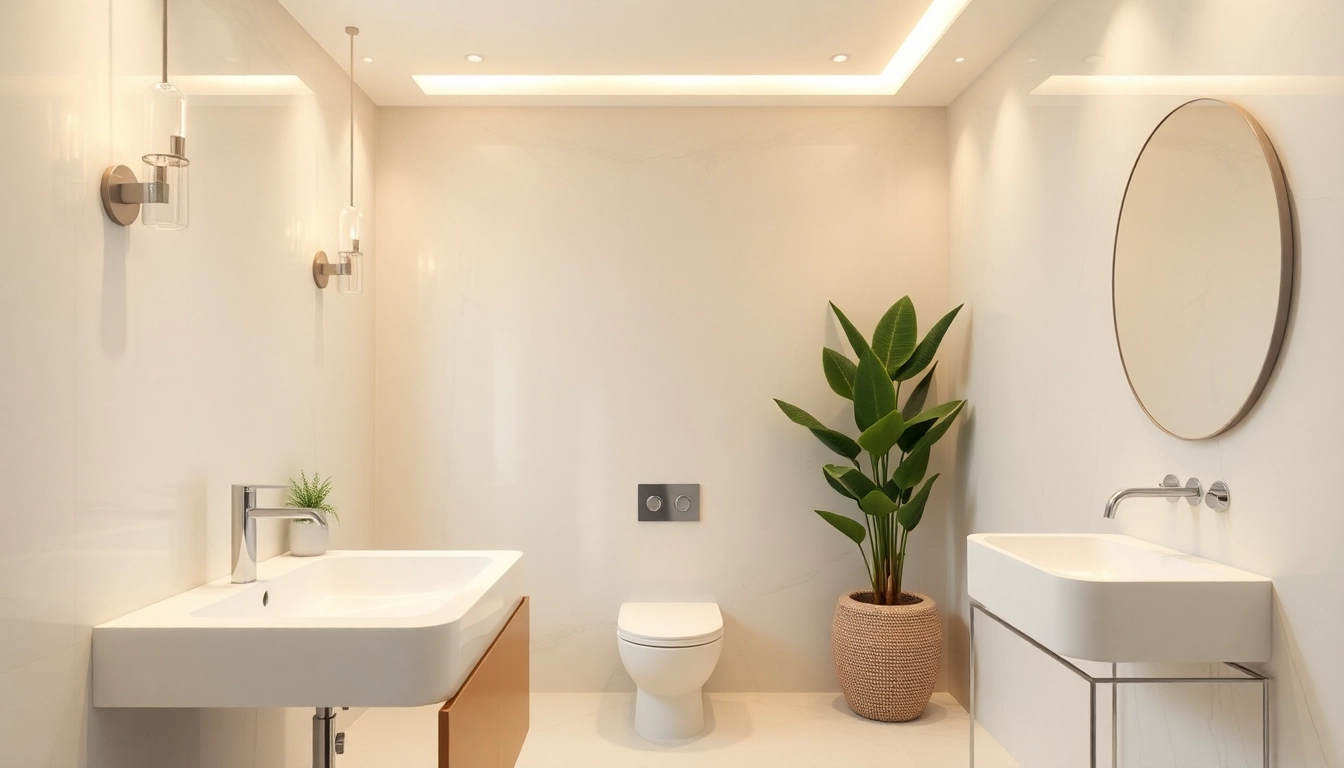Understanding Electrical Panels
The electrical panel, often referred to as the breaker box or service panel, is an essential component of any residential or commercial building’s electrical system. It acts as the central distribution point for electricity flowing from the utility provider to various circuits throughout your home. To learn more about how these systems function, check out our comprehensive guide on when to upgrade your Electrical Panel today.
What is an Electrical Panel?
An electrical panel is a metal box containing circuit breakers or fuses that distribute electricity to the various circuits in your home. Essentially, it is the interface between the utility company’s power supply and your home’s electrical systems. When electricity enters your home, it passes through this panel where it is divided and directed to different areas as needed.
Key Functions of Electrical Panels
- Distribution of Power: The primary function is to distribute electrical power to different circuits that supply appliances, lighting, and outlets throughout the home.
- Overload Protection: Circuit breakers within the panel prevent overloads and electrical fires by tripping when a circuit draws too much current.
- Centralized Control: Electrical panels allow homeowners to easily manage their electrical systems, enabling them to turn off power to specific areas during maintenance or emergencies.
Components of an Electrical Panel
The composition of an electrical panel includes several key components:
- Main Breaker: This is the primary switch that controls all power supply to the panel.
- Circuit Breakers: Individual switches that protect specific circuits by interrupting the flow when excessive current is detected.
- Bus Bars: Copper or aluminum bars that conduct electricity to the circuit breakers from the main breaker.
- Grounding System: Ensures safety by diverting excess electricity to the ground, protecting users from shocks.
Signs Your Electrical Panel Needs an Upgrade
While electrical panels can last many years, certain signs indicate that an upgrade may be necessary for safety and efficiency.
Indicators of Electrical Panel Failure
- Frequent Tripping of Breakers: If your circuit breakers trip often, this suggests an overload or a fault in the system.
- Burning Smell or Signs of Burning: Any burning odor or visible scorch marks on the panel is a serious red flag.
- Increased Energy Bills: Higher-than-normal energy bills may indicate inefficiency in the electrical system due to an outdated panel.
Common Electrical Panel Problems
Understanding common issues can help spot a failing electrical panel:
- Corrosion: Moisture can lead to corrosion within the panel, affecting its performance and safety.
- Old Technology: Older panels may not meet current electrical demands, leading to safety risks.
- Worn Out Components: Look for frayed wires or damaged parts that indicate wear and tear.
When to Seek Professional Advice
It’s essential to seek a qualified electrician if you notice any of the following signs:
- Unexplainable power outages.
- Inconsistent voltage levels.
- Installation of new heavy-duty appliances requiring more power than your current panel can provide.
Choosing the Right Electrical Panel for Your Home
When selecting an electrical panel, a number of factors must be considered to ensure your choice meets your home’s electrical needs safely and efficiently.
Types of Electrical Panels Available
There are several types of electrical panels to choose from:
- Main Breaker Panel: A common choice for residential homes that includes a main shut-off switch.
- Subpanels: These are secondary panels used to distribute power to specific areas or additional circuits in larger homes.
- Smart Panels: Modern panels that offer digital monitoring and control for energy efficiency.
Factors to Consider When Upgrading
When upgrading, consider the following:
- Capacity Rating: Ensure the new panel can handle current and anticipated electrical loads.
- Local Codes: Check with local regulations as they may dictate specific requirements for electrical panels.
- Future-Proofing: Choose a panel that accommodates potential future needs to avoid frequent upgrades.
Comparing Brands and Models
Some of the most reputable brands include:
- Square D: Known for reliability and innovation, offering a range of performance options.
- Siemens: Offers comprehensive safety features and is often favored for residential installations.
- Murray: Another popular option that provides both efficiency and affordability.
Safety Precautions for Electrical Panels
Prioritizing safety when dealing with electrical panels is critical. Follow these guidelines:
Best Practices for Electrical Panel Maintenance
To keep your electrical panel in optimal condition, consider the following practices:
- Keep the panel clean and free of dust or moisture to avoid corrosion.
- Regularly check for any signs of wear in fuses and circuit breakers.
- Employ a professional for routine inspections and maintenance.
Understanding Circuit Breaker Functionality
Circuit breakers serve to protect the electrical circuits from overload. They can be reset after tripping, but knowing when they should be replaced is equally important:
- Replace breakers after multiple trips.
- Consult with an electrician if breakers feel hot to the touch.
How to Safely Reset Your Electrical Panel
If you need to reset a tripped circuit breaker, follow these steps:
- Turn off devices connected to the affected circuit.
- Locate the tripped switch in the panel, usually in the middle position.
- Firmly push the breaker switch to the OFF position, then back to ON.
Investment and Costs of Upgrading an Electrical Panel
Upgrading your electrical panel is an important financial decision and understanding the costs involved is crucial.
Average Costs for Electrical Panel Replacement
The cost of replacing an electrical panel can vary widely. Here are some average ranges:
- Basic panel installation (100 amps): $1,000 – $2,500
- Upgrading to a larger panel (200 amps): $2,500 – $4,000
- Smart panel installations can range from $3,000 to $5,000 or more.
Potential Savings from Upgrading
While the initial cost may seem high, upgrading your electrical panel can lead to significant savings:
- Improved energy efficiency reduces long-term energy bills.
- Recent technology supports renewable energy sources, enhancing sustainability.
- Increased property value, especially when selling or renting out your home.
Financing Options for Electrical Panels
If upfront costs are a concern, various financing options are available:
- Home improvement loans from banks or credit unions.
- Credit cards with low or zero interest offers.
- Incentives or rebates from local utility companies for energy-efficient installations.















Leave a Reply